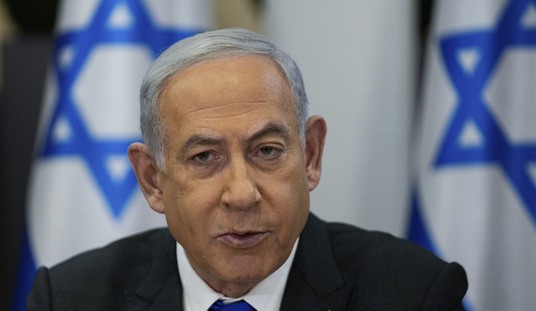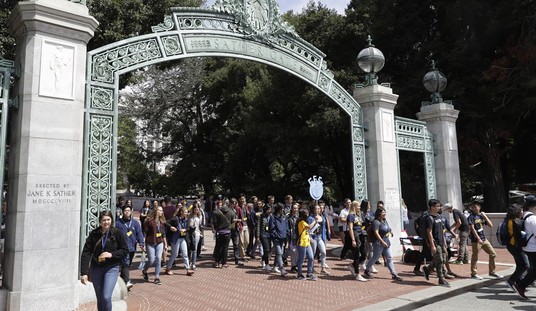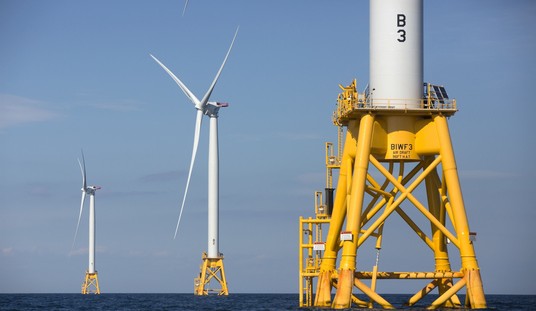Donald Trump wouldn’t be the first Republican president to listen to Minnesota’s looney siren song for the GOP, but his team should know to plug their ears. David Drucker reported yesterday that America First Action, Trump’s main super-PAC, will spend considerable time and effort into swinging this state into the red column in 2020. If Drucker’s hearing this as a serious strategy, it will come up against the hard reality of not just the midterms last week, but also what actually happened in 2016:
President Trump could be eyeing Minnesota as a way to expand his Midwest footprint in 2020, if the activities of his designated super PAC in the midterm elections are any indication.
Minnesota was among the limited 2018 battlegrounds to see a major investment by America First Action, which gathered data that might inform Trump’s strategy and boost his re-election bid over the next two years. America First Action tailored its activities to states and subregions considered crucial to Trump’s next campaign: Michigan; Minnesota; North Carolina; Ohio, Pennsylvania, and Maine’s 2nd Congressional District.
One has to wonder whether this is a serious strategy — or a feint. Minnesota might have been a counterintuitive move before the midterm elections, and now it looks even worse. Trump came within less than two points of Hillary Clinton in 2016, but how he got that close matters. Trump only added 2,000 votes to Mitt Romney’s 2012 Republican vote total, but Clinton dropped 180,000 votes from Barack Obama’s winning total. It was a lack of Democratic turnout that made the state close, not a swell of Trump affinity.
As I wrote last week, Democrats didn’t have any trouble turning out the vote last week, although Republicans didn’t either. The result was a beating in all statewide races, and a swap with Democrats in House seats:
After a near-miss by Trump in Minnesota two years ago, the party believed it had momentum to return to competitiveness again. Instead, Republicans lost across the board, including control of the state House. Even in the contest that looked the most promising — the attorney general race against Keith Ellison, dogged by domestic-violence allegations — Democrats won by four points. They won the governor’s race by 12 points, and a special election to fill the remainder of Al Franken’s Senate term by 11. While Republicans did turn out better than four years earlier, increasing Jeff Johnson’s gubernatorial tally by 200,000 votes, Democrats turned out even more. Tim Walz added over 300,000 votes to Mark Dayton’s 2014 re-election bid.
Republicans didn’t get entirely skunked in Minnesota. They picked up a congressional district in northern Minnesota where mining remains a key industry, and another in the rural south, both of which went solidly for Trump in 2016. However, they failed to convert another district where Trump won big two years ago, and also lost two Twin Cities suburban districts that had been trending Democratic over the last several years. The big Democratic turnout reverted the state to where it had been before Trump — a Democratic stronghold.
The Democrat-Farmer-Labor Party (DFL), the Democrats’ affiliate here, drove turnout with two themes: health care and Trump, in that order. It worked brilliantly, and Democrats won’t forget it two years from now, either. Local political analyst Steven Schier, a friend of mine, pointed out how successful that strategy was in the greater Twin Cities metropolitan area, including the suburbs:
First, Minnesota produced an emphatic suburban rejection of Republican candidates, a pattern also occurring nationally. Sixteen of the 18 state House seats won over by Democrats, who will take control of that chamber, are in the Twin Cities suburbs. Notable among those were the “Clinton 12” suburban districts – those won by Hillary Clinton in 2016 but held by GOP lawmakers on Election Day 2018. All 12 elected Democrats.
In many suburban districts, GOP state House candidates matched or exceeded their vote totals of 2016. Yet an unprecedented turnout of Democratic voters in these districts created GOP defeats across the suburbs. …
The problem for Trump and the GOP in Minnesota was that though rural Minnesota continued to vote heavily Republican, the anti-Trump reaction in the Twin Cities metro area was even more forceful. Turnout spiked to 77 percent in the deep blue enclave of Hennepin County. The big metro margins for Democrats allowed them to sweep the races for all statewide offices and make big state legislative gains.
Half the state’s population or more lives in the metro area and suburbs, and the whole area has been trending bluer for years — when voters show up. Unless the party nominates Clinton again or someone else equally toxic to their GOTV efforts, any Trump Team time and money spent here will go to waste. Don’t forget too that a near-miss is still an entire miss in the winner-take-all Electoral College vote in this state; close won’t win any prizes at all. And if Democrats nominate a reasonably competent candidate, it won’t be close at all.
The time and effort should get directed to the blue-wall states that largely went the same way as Minnesota last week — Wisconsin, Michigan, and Pennsylvania, the latter two of which appear on Drucker’s list. And to that list, Team Trump should add Arizona rather than Minnesota, which looks like it might slip away in 2020:
Even worse for the GOP, the loss in Arizona highlights their tenuous hold on the key states necessary to winning the Electoral College. The losses in the “blue wall” states show that normal or higher Democratic turnout will block Trump from that path to victory, unless Clinton tries running again. Without those states, Republicans can only get to 260 votes using the 2016 election results as a template. Republicans would have to make a big push in Virginia, or perhaps some combination of Colorado, Nevada, and New Hampshire in order to get the 10 electors necessary to win without the Midwestern flips that made Trump president.
If Sinema’s win means Arizona is in play — and Trump’s 49 percent in 2016 already suggested it might be — then there is almost no place to make up the loss of those 11 electors. On top of that, the close election in Georgia’s gubernatorial race also potentially puts that state in bubble status as well, with another 16 electors at risk in a state Trump won with only 51 percent of the vote. Suddenly, Trump has gone from 306 electors to just 249 or even 233.
Arizona turning purple should have Republicans wringing their hands for the next two years. Debate over the existence of a “blue wave” misses the point. Unless the GOP finds a way to attract large numbers of new voters to their banner, the 2020 cycle looks grim.
Maybe Team Trump wants Democrats to take the bait and spend too many of their resources in Minnesota. If we’re part of a feint strategy, well, some eight-dimensional chess might be necessary the next time out. If not, though, any resources not spent on holding the previous path to the White House will likely ensure that no path ends up existing at all. Abandon hope, all GOP who enter here in Minnesota, uff da.







Join the conversation as a VIP Member